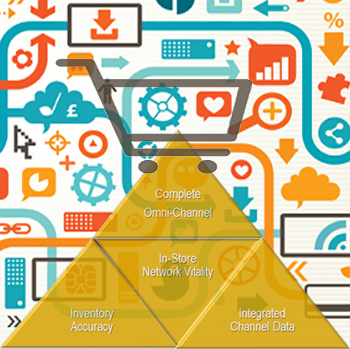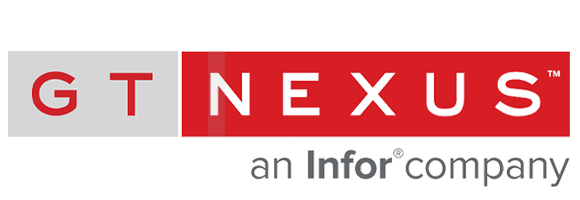Is Anyone Really Completely Omnichannel Ready?

There are so many pieces to the omnichannel puzzle and the shape of each of those pieces seems to change on a daily basis, making it extremely difficult to complete the puzzle.
First, let’s confirm that we are all working from the same understanding not only of what omnichannel is, but what is meant by completely omnichannel.
Naturally, some of the specifics of what it means to be omnichannel will vary depending on the type of retailer.
In late 2011, clienteling and mobile checkout were discussed as the up-and-coming retail technologies. That quickly changed to cross-channel and almost before that phrase came out of our mouths, along came omnichannel - some vendors and consultants are already talking integrated commerce.
Whatever name is chosen, it can be widely debated that this definition, borrowed from a recent Motorola Solutions whitepaper, is reasonable:
“Connected customers can shop for and purchase the same items across many different channels, in a retail store, on their home or laptop computers and perhaps most importantly on their connected mobile devices which allow them to shop online for virtually anything, virtually everywhere…”
Is omnichannel truly enabled or are channels just connected? The poster child for omnichannel has been buy online, pickup in-store. It is entirely conceivable to connect the online channel with the store channel to send a message that says a customer will be in to pick up that striped shirt. However, when the customer arrives at the store, is the inventory accuracy and in-store procedures solid and timely enough to deliver customer satisfaction or are they disappointed?
There are so many pieces to the omnichannel puzzle and the shape of each of those pieces seems to change on a daily basis, making it extremely difficult to complete the puzzle. There are new ideas and concepts every day, causing retailers to suffer from “Omnichannel ADHD” making it very difficult to focus on a solid strategy and stay the course for completion. Mobile checkout, predictive analytics, in-the-moment product recommendations, distributed order management, tablets in stores, EMV, mobile apps…hey, there’s a butterfly!
Regardless of the ever-changing landscape for omnichannel there are fundamental building blocks that cannot be ignored if anyone is to be successful delivering a complete omnichannel solution. Everything that is visible to the customer depends upon three foundational elements - the I3 Foundation for Omnichannel:
- Integrated Channel Data: Are you faking it, or do you truly have a repository for your customer data that includes all channels in an accessible location?
- Inventory Accuracy: Are you confident in your inventory and how much does accuracy degrade between physical inventories?
- In-Store Network Vitality: Does your network have the horsepower to handle tablets, mobile checkout, digital signage, RFID, etc. not only now but also for the future?
The I3 Foundation (diagram above) essentially supports a complete omnichannel solution. If any of the supporting elements are missing or incomplete, so is the omnichannel solution, and the risk of customer disappointment is greatly heightened.
Inventory Accuracy
Even with a completely implemented distributed order management system that can build and maintain orders from multiple inventory locations (distribution center, store inventory, reserve inventory, etc.), the fulfillment of that order still hinges on the accuracy of the inventory at each of those fulfillment sources. If the store inventory averages 65% -75% accuracy there is a risk of disappointing the customer 25%-35% of the time. Is that acceptable in today’s environment?
Supplying the staffing or the external costs in the stores to take the appropriate numbers of cycle counts and physical inventories is essentially not a long-term option. RFID has been shown to deliver inventory accuracy levels above 95%. While that kind of accuracy will support omnichannel functionality, the lead time to implement the RFID capability is dependent upon time-intense tasks. For example:
- Tagging merchandise with RFID antennas at the manufacturer
- In-store equipment installation
- Integration with current systems
- Integration with existing POS capability
Based upon a company’s lead time for purchase orders, it is conceivable that acceptable levels of inventory accuracy can be 12-18 months following the live date. However, this depends on the following factors: the number of manufacturers/suppliers that must initiate the tagging capability, prepping distribution center and store merchandise to assure 100% RFID-tagged inventory, and training for store associates to effectively implement the technology.
In-Store Network Vitality
While one store associate is using a tablet to retrieve a customer’s purchase history for use in a store transaction, another associate is checking out a customer on a mobile device and a third is accessing the web to locate an item that is not currently available in that store. The contention on the network that is bandwidth challenged is both uncomfortable for the associate and annoying to the customer.
Depending upon the number of stores in the network and where the store is located will determine any kind of 3G/4G or WiFi implementation. Retailers must be sure to contract negotiations with a carrier and take into account implementation planning, equipment rollout, and training of store and help desk personnel. These additional aspects can cause an upgrade to a network with enough bandwidth to handle omnichannel transactions to take more than a year to complete.
Integrated Channel Data
Traditionally, all retailers have POS customer data. However, because the call center automation was in a different system, that data was stored separately. Then there was the web channel, which created another software platform and volumes of data stored in yet another database location. A complete omnichannel customer information set must include a complete purchase history, regardless of the location of the data. The speed with which the omnichannel experience plays out (regardless of the channel that the customer is using) precludes anyone from searching and retrieving information from three separate databases at the point of engagement.
Planning, architecting and implementing an omnichannel database analytics solution for an organization is no small task and can take years to develop and fine tune.
Given these fundamental building blocks of any omnichannel solution, it is very important for retailers to assess their state of omnichannel readiness. Referring back to diagram above, retailers should identify how complete each of the foundational areas is for their organization, the steps necessary to bring each area to maturity, and a strategy for implementing the necessary changes. Given the constrained corporate and IT budgets in retail, accomplishing one, not to mention all three at the same time, is essentially a budget impossibility.
These three foundational elements are the enablers for omnichannel, with the presentation that the customers and retail associates need to utilize omnichannel information in the moment of the transaction layered on top. Given the constant constraints of resources (time, money and people) for implementation, I ask again: Is any retailer completely omnichannel ready?
About the Author
Ken Silay is director of technology research and innovation for Chico’s FAS, Inc.
Source: RIS - Retail Info System News
Article Topics
GT Nexus News & Resources
The Current and Future State of Digital Supply Chain Transformation Infor Coleman AI Platform to ‘Rethink Supply Chain’ and Maximize Human Work Potential End-to-End Visibility: Handling the Demands of Retail Mastering Supply Chain Finance ERP Suppliers’ Changing Role New Logistics TMS Platform Sets Sights on SAP Amazon Selects Infor for Global Logistics Business More GT NexusLatest in Supply Chain
TIm Cook Says Apple Plans to Increase Investments in Vietnam Amazon Logistics’ Growth Shakes Up Shipping Industry in 2023 Spotlight Startup: Cart.com is Reimagining Logistics Walmart and Swisslog Expand Partnership with New Texas Facility Nissan Channels Tesla With Its Latest Manufacturing Process Taking Stock of Today’s Robotics Market and What the Future Holds U.S. Manufacturing Gains Momentum After Another Strong Month More Supply Chain














